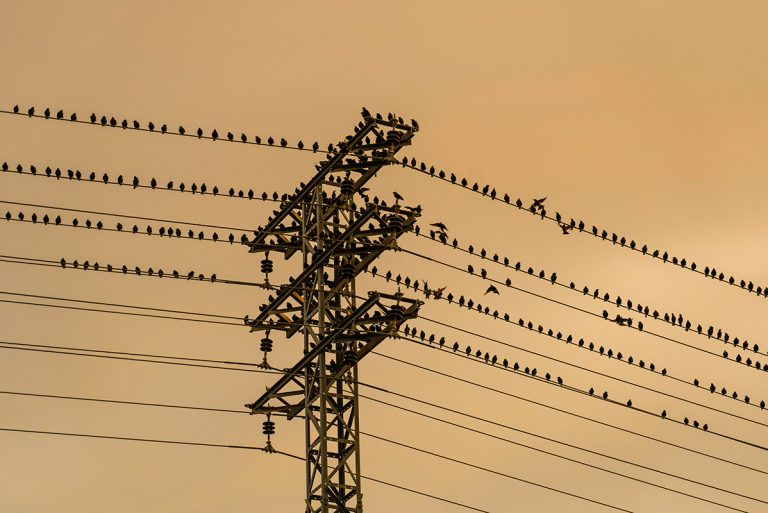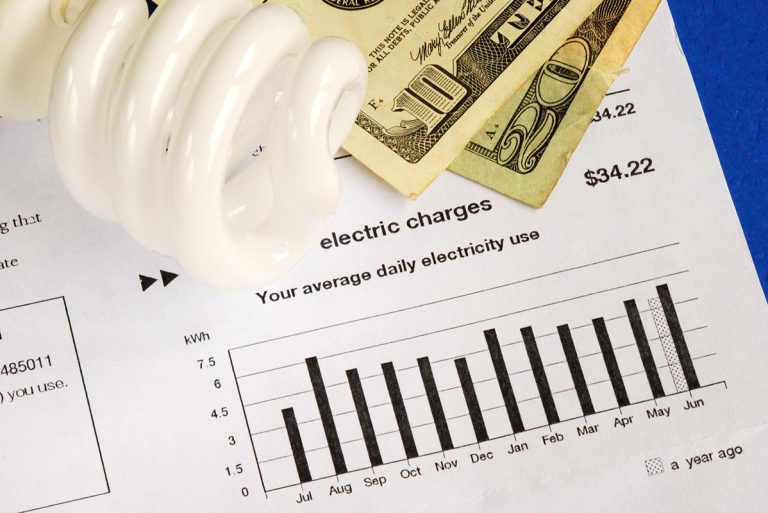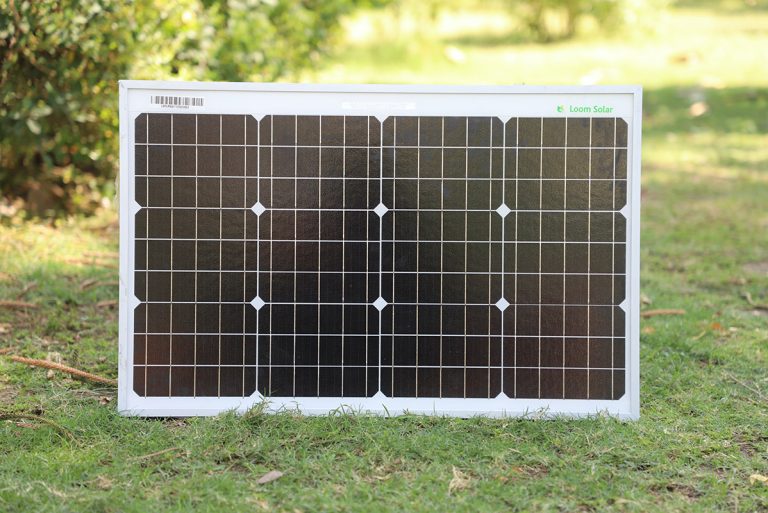Like most people in the 21st century Tech Age, you’ve probably wished for wireless charging of your electronic gadgets. No wires. No chargers. No scrambling around searching for an outlet. And certainly not any low battery life anxiety.
Just like magic, you imagine electricity flying through the air like invisible sparks, wirelessly, powering up the smartphone in your pocket or the tablet on your desk, and keeping them always topped off.
Low battery warnings? Permanently a thing of the past.
Investors, wanting to seize on the money-making opportunity presented by the notion of wireless electricity, rallied behind so-called nanocrystal electricity companies that supposedly could pull this off.
Not so fast.
Although there is science to support it, nanocrystal electricity exists mostly in labs today. You’ll read about some of this exciting research, especially in photovoltaics (solar energy).
You will also learn about unsuccessful investor campaigns to sell stock in nanocrystal electricity. You will meet a company wrongly associated with nanocrystal electricity, and find out what they are doing instead.
In fact, this company is one of several tech startups that is taking the core concepts behind nanocrystal electricity and wireless electricity and running with it. Using various scientific techniques, they’re developing a type of wireless technology known as wireless power transfer (WPT). The startups are actively working on scaling it up for widespread use.
Find out here what WPT means for you — now and in the future.
What is nanocrystal electricity?
Nanocrystal electricity refers to tiny crystals generating electric currents via the piezoelectric effect. There are two ways this effect happens: direct and inverse.
Direct piezoelectric effect
Mechanical pressure on extremely small (nano) crystals creates an electric current, as the diagram below of the direct piezoelectric effect shows.
Microphones and pressure sensors function because of the direct piezoelectric effect.
Inverse piezoelectric effect
Similarly, the inverse piezoelectric effect occurs when voltage is applied to a piezoelectric crystal, expanding or shrinking it. Speakers in phones and buzzers as well as sonar operate because of the inverse piezoelectric effect.
Here is a diagram illustrating the inverse piezoelectric effect on a nanocrystal of lead zirconate titanate:
Unfortunately, nanocrystal electricity could never work on a grand scale to power a home or a country because the electric currents produced are just too small to power anything for any significant length of time.
Yet somehow, in the late 2010s, investors began promoting nanocrystal electricity as the next big thing in green technology.
At the time, the startup tech company, Energous, was cited in a few articles and financial newsletters as spearheading nanocrystal electricity, a “disruptive” technology with great money-making potential. However, a 2018 article published by Nanalyze titled Investing in Nanocrystal Electricity Stocks stated clearly:
“In looking through the latest 10-K from Energous, not one mention is made of “nanocrystal” anything. In fact, not once are the words “nano” or “crystal” used in the entire document. So whoever decided to start calling wireless charging “nanocrystal electricity” should be slapped. Henceforth, we will try to never use this term again, and instead talk about “wireless charging.”
To support this conclusion, we spoke with Cesar Johnston, the CEO of Energous, in an October 2022 video call. He confirmed that nanocrystal electricity was never a part of their game plan or mission as a wireless power company. Johnston stated unequivocally:
“Energous has nothing to do with nanocrystal electricity.”
When asked how the mistaken connection between Energous and nanocrystal electricity could have gotten started, Johnston, suggested that the longstanding goal among scientists to “harvest” electricity in a way that didn’t depend on fossil fuels was probably behind it. He pointed out that researchers have been exploring alternative strategies to generate electricity, like using solar energy or radio frequency waves, for over a century.
Besides Energous, there are several startups innovating in the wireless technology space. They are all featured later in this article.
But first, brief looks at nanocrystal electricity on an experimental scale and on the history of wireless electricity will help piece together this puzzle about how we got from nanocrystal electricity to wireless power transfer (WPT) via wireless electricity.
Nanocrystal electricity in the lab
In the 2010s, while investors began hailing — without good reason — the unlimited potential of nanocrystal electricity stock to make money, there were scientific papers related to the topic being published. It’s possible that the person who coined the phrase nanocrystal electricity considered this work as a scientific justification for it.
However, the scientific advances on nanocrystals happening in research labs had nothing to do with electricity to feed the grid, power homes, or even recharge devices wirelessly — as the investors claimed.
Nanocrystal research, for instance, falls within the emerging field of nanoscience in medical applications such as drug delivery. Several research teams look specifically at the electrical characteristics of nanocrystals. Here are three of them:
Photovoltaics refers to the use of sunlight energy to create direct current (DC) electricity. It’s the science behind solar panels.
There is an ongoing effort in the scientific and engineering communities to identify chemically stable and non-toxic crystals that efficiently convert solar energy to electrical energy. This paper discusses the testing of semiconductor nanocrystal solids for their electrical properties. The goal is to identify highly absorptive materials for advanced solar cells with superior efficiency.
This work investigates a new class of semiconductor nanocrystals called nanoplatelets used to make brighter light-emitting diodes (LEDs). You are probably familiar with LEDs as the small red, blue, white, or green lights that indicate the charging or on/off status of electronic gadgets.
Researchers believe these nanocrystals can be used in solar cells or lasers as well as in high-performing LEDs.
Perovskite nanocrystals hold much promise in photovoltaics as a silicon alternative. They are less energy-intensive to produce than conventional solar cells and generally are made with more environmentally-friendly substances.
As of yet, perovskites aren’t stable long enough to be commercially scalable in solar panels. This means they degrade quickly. Research looking at the characteristics of specific perovskites, including their electrical properties, aims to overcome this technical barrier to creating highly efficient solar panels.
A 2022 study proposed an experimental method of accelerated aging of perovskites. The researchers were able to estimate the stability of their perovskite solar cells to be 5+ years at elevated temperatures and humidity. Efficiency remained high. This is an incredible improvement compared to other perovskites.
The new technique is an important tool with which investigators can measure perovskite solar cell longevity. Expect more technological advances with perovskites in the near future.

General conclusion from nanocrystal electricity research
Labs researching the electrical characteristics of nanocrystals exist in academia, industry, and government today. As suggested here, most of it is related to photovoltaics. It is distinctly not about nanocrystal electricity on a commercial scale envisioned as an alternative to fossil fuel power plants, electrical substations, and high-voltage wires and poles stretched over much of the world.
The dream of nanocrystal electricity to power homes, offices, and factories belongs only to investors hoping to sell stock in nanocrystal electricity companies — although there weren’t any.
However, the concept of wireless electricity is not new. For this invention, we have Nikola Tesla to thank.
Nikola Tesla and wireless electricity
Nikola Tesla had big plans for wireless electricity as a late 19th-century engineer, physicist, and futurist credited with the invention of alternating current (AC) electricity used worldwide in homes, offices, and factories. However, none of his plans involved nanocrystals.
For Tesla, inventing many modern conveniences we still enjoy today, such as remote controllers, x-rays, neon lamps, and radios, was a mere prelude to his dream.
Tesla hoped to electrify the world wirelessly. For him, wireless transmission meant “a great step will be made toward the unification and harmonious existence of the various races inhabiting the globe.”
Tesla started the project in 1902 in New York but couldn’t complete it when his funding was cut by a wealthy banker who probably didn’t want electricity to be free as a public good. Yet his research was of such great significance for the potential it had to upend the energy production status quo that it was confiscated by the FBI after his death.
Earlier in 1893, at the Chicago World’s Fair, he had proven the concept of wireless electricity in an exhibition room. For this, he invented a type of wireless power transfer (WPT) called resonant inductive coupling. To the amazement of bystanders, he demonstrated that electricity could be transmitted and used wirelessly.
With this invention, Tesla lit up lamps with no wires. He called it “cold light” created in glass tubes containing gases when close to an electric current moving through the air in the room. He wrote a 1901 newspaper article describing his experiments.
How does resonant inductive coupling work?
Tesla generated electricity wirelessly through resonant inductive coupling using another of his well-known inventions: the Tesla coil. This device is a special type of transformer consisting of two loosely coupled resonant circuits. It is capable of producing extremely high-voltage, high-frequency, but low-amperage alternating current (AC) electricity inside a strong magnetic field.
In a Tesla coil, electrical charges can jump across an air (spark) gap as arcs. The maximum amount of electricity that can be transferred across an air gap occurs when the two circuits oscillate at the same frequencies. Tesla claimed that his wireless electricity could be transferred with only a 5% energy loss.
How did Tesla plan to take wireless electricity around the world?
Tesla’s vision with resonant inductive coupling as a form of wireless power transfer was to apply it on a grand scale and take wireless electricity around the world. One of the ways he hypothesized it could occur was by tapping into the Earth’s resonance.
Based on many of his experiments, Tesla came to view the Earth as a massive electrical power conductor that could be made into a generator. First, he observed that the Earth possessed a natural electric charge with its own specific vibrational frequency.
Then he hypothesized that by matching the planet’s frequency with that of an electric oscillator, and stepping it up further with a magnifying transmitter — instruments which he also invented — he could excite a low-frequency ground wave called the Zenneck surface wave. The Earth’s electric current would travel via these waves underground, producing wireless electricity anywhere in the world.
So it was feasible to Tesla that he could run AC electricity across the Atlantic Ocean not with wires but through the underground tunnels located around his lab and the Wardenclyffe Tower in New York. The Tower itself was 100 ft. in diameter and over 200 ft. high.
Researchers speculate that “…the deep tunnels seem to have been constructed to increase earth coupling for grounding and/or to initiate standing waves for the projection of electricity to remote locations.”
According to Tesla’s view, by tapping into the electric current traveling underground through the Earth’s own natural resonance, you could access the electricity anywhere on Earth — without wires.
In Tesla’s own words: “When wireless is fully applied, the earth will be converted into a huge brain, capable of response in every one of its parts.”
Here is a copy of an original drawing from Tesla’s 1907 patent application for “an apparatus for transmitting electrical energy”:
As of today, no company has seriously picked up the torch lit by Tesla. Instead, the world relies on an antiquated electric grid, ironically also developed in part by Tesla. In the United States, except for 13% from wind and solar energy sources, fossil fuels (coal and gas) supply over 60% of the electric grid. This fossil fuel burning is fueling the climate crisis today.
Did Tesla complete his global wireless electricity experiment?
Because Tesla’s employer, the Westinghouse Electric & Manufacturing company, had so heavily invested in building the grid’s infrastructure in the United States — with Tesla’s ingenuity behind it, of course — they were unwilling to forego its money-making potential and take a risk on developing Tesla’s wireless electricity.
At the time, the cause-and-effect relationship between fossil fuel burning and climate change was not well known, even though a few scientists had predicted and demonstrated the global warming potential of carbon dioxide.
Notable among them were the first researchers doing climate science: Eunice Newton Foote in 1856 and John Tyndall in 1859.
In 1938, G.S. Callendar showed for the first time that it was “artificial” (human-caused) fossil fuel burning that was increasing carbon dioxide in the atmosphere as well as the global temperature.
What are the consequences of using the electric grid instead of Tesla’s wireless electricity?
At the turn of the 20th century, with Westinghouse’s Tesla in charge, human civilization was on track for burning up the stored carbon from millions of years of plant and animal decomposition in order to keep the grid working. Today, just 100 years or so later, humanity is beginning to experience the adverse climatic effects largely resulting from that choice.
Known for high transmission losses — over 13% in some states as the diagram below shows — and prone to shutdowns during peak demand times, the electric grid is not the most efficient way to power a country. High-voltage wires strung on wooden poles are vulnerable to climate crisis-intensified storms.
Further, there is evidence that aging equipment is a prime cause of some wildfires in California.
Today, there are new problems for the grid. With the push toward renewable energy, electric vehicles, and electrification of all sectors, some researchers provide evidence that there is serious doubt whether the present grid can handle the heavy loads that are increasingly being put on it.
There is no question that the company that makes wireless electricity for the world — as Tesla envisioned — on a commercial scale will not only save the day (and the world) with clean, green power. This company will likely earn billions in profits.
From nanocrystal electricity to wireless power transfer (WPT)
The core concept of producing, transmitting, and consuming electricity without wires is at the heart of all wireless technology, including wireless power transfer (WPT). However, there are no nanocrystals involved in any of the technology arising from companies innovating in the WPT space today.
As explained earlier in this article, nanocrystal electricity was a hyped-up scam by investors meant to attract people looking to invest in “disruptive” green technology. WPT is somewhat like what the nanocrystal electricity scam envisioned: electricity traveling wirelessly to power devices across a distance.
However, don’t think WPT is brand new. It’s been around for at least a century, but just not marketed as WPT is today.
What is wireless technology and wireless power transfer (WPT)?
Have you ever heard of radio telemetry, satellite communications, or radio frequency identification tags (RFIDs)? They are examples of wireless technology.
Here’s a brief rundown on what these early forms of wireless technology do:
- Radio telemetry
Telemetry uses sensors to collect data (current, temperature, pressure, etc.) from a remote location. The information is converted to voltages, combined into a single stream, and transmitted. Upon reaching a receiver, the data are separated and analyzed.
The first time telemetry was used in the early 1900s; it moved data from power plants to a central office via telephone lines. So, it wasn’t truly wireless at the start.
In the early 1960s, radio telemetry became widely used to track wildlife at a distance. Very high frequency (VHF) radio telemetry is currently the most commonly used practice for animal tracking. Besides a transmitter and receiver, an antenna is involved. Animals are given their own frequencies in the 30-300 MHz range allowing specific individuals to be tracked for long periods.
- Satellite communications
Satellites and other spacecraft take photos and collect data on their current status and location. They communicate this information via radio frequency waves beamed down to large antennae on Earth. One antenna could be over 200 feet in diameter. The antennae make up the Deep Space Network (DSN) and are located around the world.
Similarly, space agencies send information to satellites via the DSN. An example is a list of instructions for a repair.
Here’s a photo of the Mars Antenna in California.
- Radio frequency identification (RFID)
Radio frequency identification (RFID) is a form of wireless power or communication based on radio frequency waves. It dates back to the 1940s. RFID can uniquely identify a person, animal, or object.
RFID systems consist of three components:
- Scanning antenna
- Transceiver
- Transponder
The antenna and transceiver may be combined in a reader (either portable or stationary). The transponder is in the RFID tag.
Readers and tags “talk” to each other via radio waves. First, a reader sends out a signal to activate a tag. Then, the tag responds with a signal of its own. The signal is translated into data such as location. Tags may have their own power source (batteries). Or, tags could run off of the power supplied by a reader through electromagnetic induction of an electrical current in the tag.
Simple RFID tags are smart labels that feature a bar code. No specialized equipment is needed to print out an adhesive smart label and display it in a store.
Common applications of RFID technology include:
- Passports
- Pet tracking
- Inventory
- Vehicle tracking
- Shipping
- Healthcare
- Some credit cards
Wireless Technology: Then and Now
Wireless technology has undergone significant development since its debut in the early 1900s. Begun as a way to transmit data without wires, it now also moves electrical power wirelessly. Thus, its name: wireless power transfer (WPT).
Initially, WPT transmitted only very small amounts of power in the microwatt to milliwatt range. By contrast, modern WPT moves a few watts up to several kilowatts over larger distances.
In recent years, WPT has exploded to include cell phone, tablet, and drone charging, stationary charging of electric vehicles (EVs), and dynamic charging of EVs known as road-powered EVs (RPEVs).
For EV applications, industry has created a special branch of WPT, called inductive power transfer (IPT).
The diagram below gives an overview of the many types of WPT in existence today. The schematic indicates the way power passes over the air gap between the transmitter and receiver.
What is Qi charging?
In 2008, the Wireless Power Consortium (WPC) developed standards for wireless battery charging, also called Qi (“chee”) charging. The standards apply to both inductive and resonant WPT technologies.
Here is the Qi logo on a charging pad:
Inductive charging often involves use of a charging pad. Resonant charging may not need a charging pad.
Qi charging up to 15 watts is possible today. Note that not all devices on the market today have met Qi standards. Look for the Qi logo to be sure.
As of this writing, 9,113 gadgets are qualified by the WPC. This means they have undergone testing and completed the certification process. The fields they create will not harm sensitive equipment such as implanted medical devices. Qi-registered products can be safely charged with Qi-certified chargers. Visit the Qi database to see if your device is certified.
Are the electromagnetic fields produced by wireless charging harmful to human health?
Wireless charging produces an electromagnetic field (EMF). Most experts (but not all) do not consider it to be harmful to human health because the levels are so low.
However, if you have very sensitive equipment, such as some implanted medical devices, it could cause a disturbance.
When EMFs become more powerful and ever-present with advanced WPT technology, wireless charging could present more of a health hazard. Currently, EMF radiation is highest very close to charging pads. There is none when there is no device on the charger being charged.
If you’d like to measure the EMF generated by your wireless charger, this portable gizmo, a Trifield TF2, will deliver all the data you need to make your assessment.
WPT company profiles
Here’s a brief look at what’s going on and what’s up and coming in the wireless power transfer (WPT) world in 2022.
Energous
Energous are developers of WattUp, a government-approved and -regulated technology for desktop, near field, and far field charging, Energous is a leader in the WPT space. The company uses radio frequency (RF) waves to power devices wirelessly.
Energous wireless products work through a transmitter and receiver. The transmitter sends energy via radio waves to a WattUp-enabled receiver in a chargeable device. The receiver converts the radio waves into DC electrical power that charges the device’s battery.
As of today, the maximum distance between transmitter and receiver allowable for Energous’ power transfer of up to 15 watts is 15 meters. Placing transmitters in a long string — always 15 meters apart — will permit unlimited wireless transfer.
The WattUp technology uses radio frequencies that are different from those used by WiFi or Bluetooth, so interference is not a problem.
Currently, Energous is focusing on batteryless tags and radio frequency identification (RFID) tags for various commercial applications. This work will eliminate the need for batteries.
One of Energous’ latest projects is developing a low-power carbon dioxide sensor. This technology can be used in monitors for indoor air quality.
According to the Energous website, the company holds over 200 patents. It is approved to ship its products in 112 countries including the European Union and North American markets.
Powercast
Powercast WPT is based on radio wave (RF) energy to power devices via transmitters and embedded receivers. Once the receiver transforms RF energy to DC electrical current, the energy could be used to power a batteryless device or to recharge a battery already in the gadget.
Some of the applications of PowerCast products include:
- RFID (radio frequency identification) used for environmental monitoring
- Battery recharging for wearables and other consumer devices
- Batteryless price tags
- Smart cards
- LED-based packaging.
Powercast’s wireless technology automatically turns on when it senses that nearby devices need charging. Similarly, it deactivates when they’re fully charged. Alternatively, Powercast’s products can be set to deliver power continuously, or on a scheduled basis.
WiTricity
Electric vehicle (EV) charging by WiTricity is painless without cables or cords using highly resonant WPT.
Invented by Massachusetts Institute of Technology professor Marin Soljačić in 2005, this type of WPT couples the magnetic fields of two specialized devices with closely matched resonant frequencies into a single continuous magnetic field. This coupling enables the transfer of electrical power from one device to the other at high efficiency and over a long range.
With this WPT technology, charging an EV is as easy as driving up to a designated spot (like your garage) and recharging automatically. No need to plug in your vehicle, or even get out of the car. But if you’re worried about EMF radiation, you’d want to get out.
The WiTricity system is composed of three parts:
- Wall box that converts a power source, such as the electric grid, to high-frequency energy delivered to the charging pad.
- Charging pad contains the coil and associated parts that transforms the high-frequency energy into a magnetic field that enters a receiver in the EV
- Vehicle receiver captures the energy from the magnetic field and converts it into the DC electrical current that recharges the battery.
WiTricity WPT will operate efficiently to charge all types of EVs.
Ossia
Started in 2008 as Omnilectric, Ossia is a wireless tech company using radio frequency waves to power devices at a distance.
Through its flagship product called Cota, radio frequency waves carrying power travel from transmitters to receivers embedded in a wide range of electronic devices. Cota charges them wirelessly.
So far, Cota technology is used in consumer electronics, medical devices, industrial equipment, and automotive applications. There is no charging pad or wires used.
Without being tethered to a charging pad, users can walk around holding their device while it’s being charged. Cota technology is built to allow the receiver’s beacon signal to use walls and objects, but never pets or people, to find a path to a transmitter.
Ossia holds over 180 patents, and its products are approved for sale in over 45 countries.
Final thoughts on wireless technology, wireless electricity, and nanocrystal electricity
Nanocrystal electricity was the enticing tech stock buzzword that investors didn’t flock to, suspicious of it being a scam. Investors touted it as the way to revolutionize human civilization by making electricity flow via tiny nanocrystals instead of wires. The investors attempted to attract big money to so-called nanocrystal electricity companies supposedly developing this technology.
Nothing materialized from the investors’ efforts in nanocrystal electricity. There is some work in research labs on using nanocrystals to create electricity, mostly in photovoltaics.
The invention of wireless electricity belongs to Nikola Tesla at the beginning of the 20th century. Although he didn’t fully realize its potential, several companies are working today on developing a type of wireless technology called wireless power transfer (WPT).
Employing principles of radio frequency (RF) waves, ultrasound, lasers, or magnetic resonance, these companies are transforming how electricity is transmitted and consumed.
For example, it’s now possible to recharge small electronic devices and electric vehicles wirelessly. There’s no need for a separate charger, bulky plug, or electrical outlet.
With each new development in wireless technology, it may soon be widely available to everyone to recharge gadgets and electric cars without charging pads. Maybe one day wireless technology will power your home and office, too.













